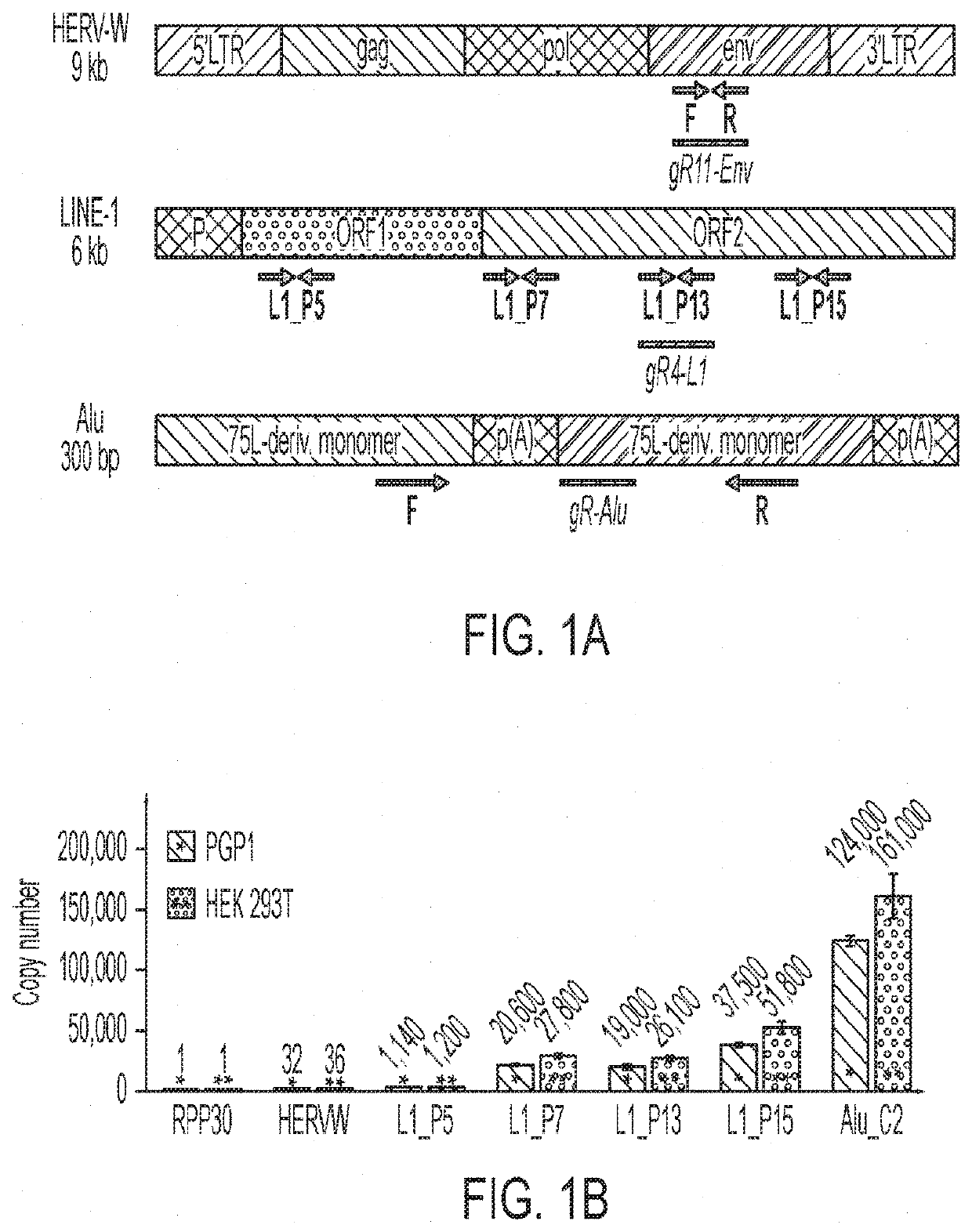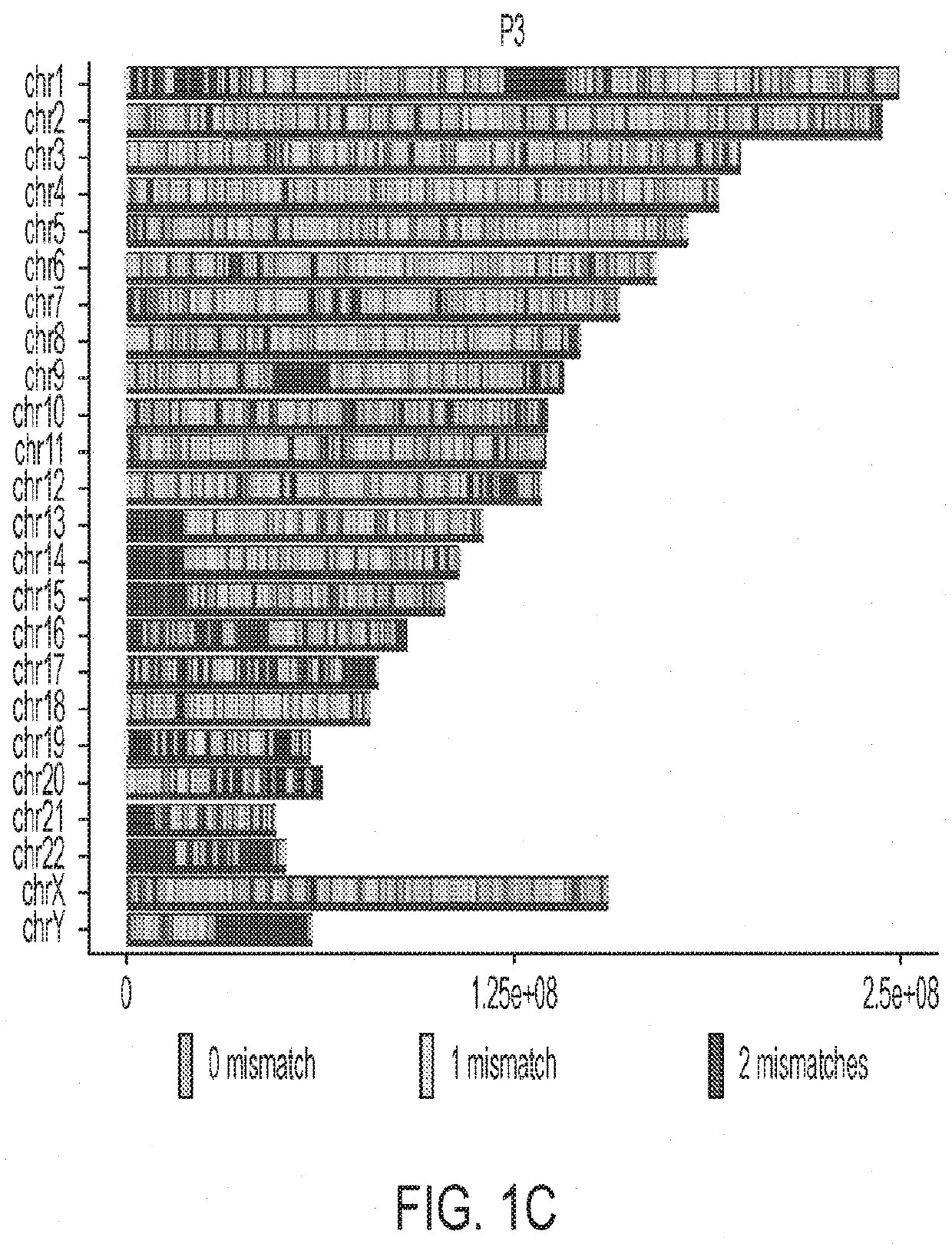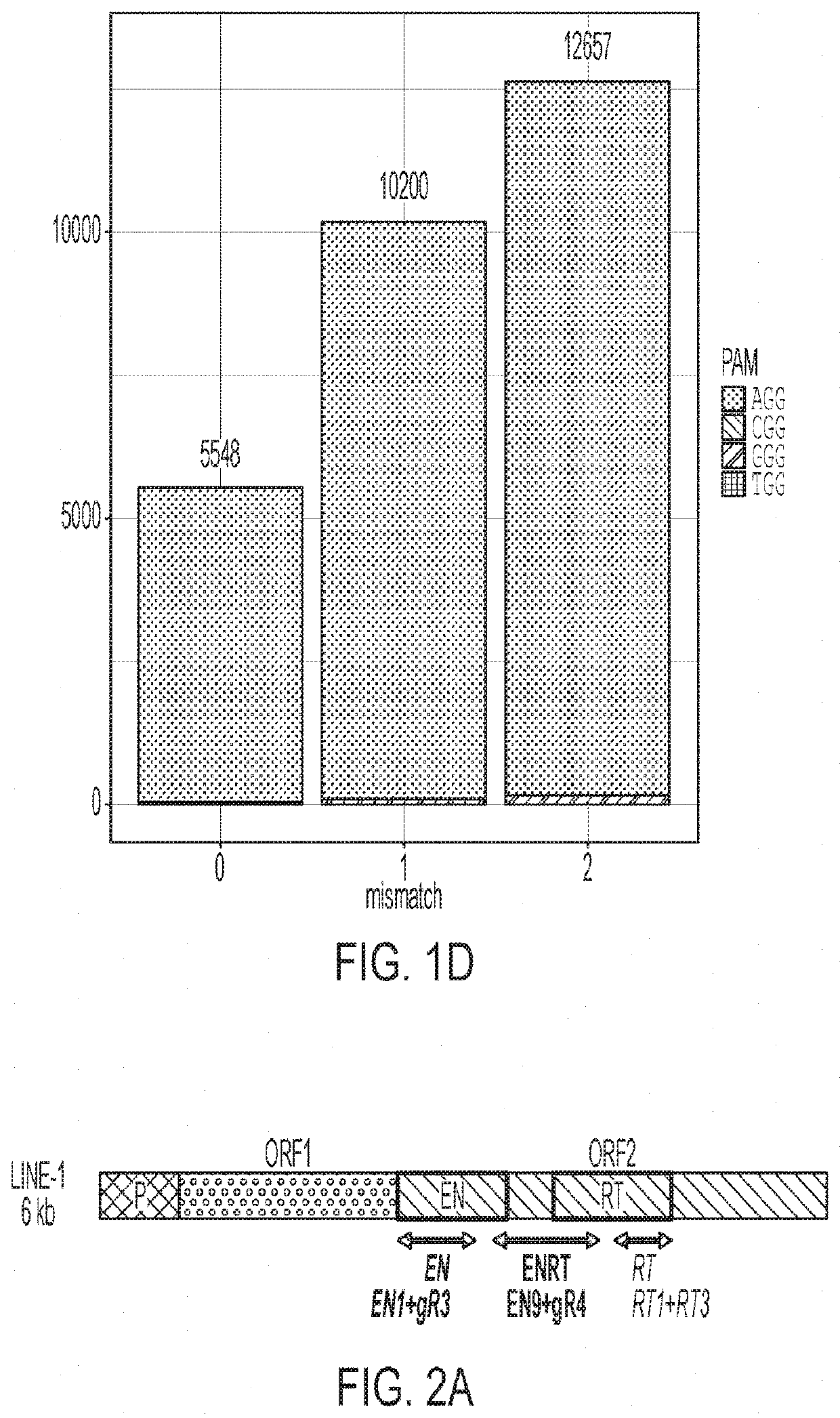Highly multiplexed base editing
a technology of multiplexing and base editing, applied in the field of high-multiplexed base editing, can solve the problems of no single method currently exists to effectively deliver or express multiple guides with the efficiency and scale needed for massively multiplexed genome editing, and achieve the effects of facilitating single target editing, reducing toxicity, and improving the survival of highly-edited clones
- Summary
- Abstract
- Description
- Claims
- Application Information
AI Technical Summary
Benefits of technology
Problems solved by technology
Method used
Image
Examples
example 1
Materials and Methods
[0251]Transposable Element gRNA Design
[0252]gRNAs targeting Alu were designed by downloading the consensus sequence from repeatmasker (repeatmasker.org / species / hg.html). LINE-1 gRNAs were designed based on the consensus of 146 “Human Full-Length, Intact LINE-1 Elements” available from the L1base 244. HL1gR 1-6 were designed to generate stop codons from C->T deamination mutations. EN, RT and ENRT pairs of gRNAs were designed to create moderate size deletions (200-800 bp) easily distinguishable from their wild type full-length forms by gel visualization. Human Endogenous Retrovirus-W (HERV-W) gRNAs were designed based on the consensus sequence of the 26 sequences identified by Grandi et al.45 that can lead to the translation of putative proteins.
qPCR Evaluation of Copy Number Across Repetitive Element Targeting gRNAs
[0253]The qPCR reactions were generated using the KAPA SYBR FAST Universal 2X qPCR Master Mix (Catalog #KK4602) according to the manufacturer's instru...
example 2
[0280]nCBE and nABE Activities Enables Isolation of Stable Cell Lines with Hundreds of Edits
[0281]With the thought that use of nicking base editor technologies (nBEs) could help improve the viability of LINE-1 edited cells, LINE-1 targeting gRNAs (HL1gR1-6 [Table 3]) that generate a STOP codon early in ORF-2 using C→T deamination were designed and tested. HEK 293T cells were transfected with nCBE3 and each of these gRNAs. Deamination events were detected at each of the six gRNA target loci that, although small (˜0.05% —0.67%) exceeded levels in mock transfected control cells (FIG. 8A). These same CBE gRNAs could be used with ABEs, as they contain at least one adenine within their deamination window. Above control levels of base editing were detected in genomic DNA in 4 out of 5 gRNAs for both nCBE4-gam (FIG. 8B) and nABE (ABE7.10, Addgene #102919, SEQ ID NO: 15) (FIG. 8C). While nABE with HL1gR6 exhibited the highest editing efficiency (4.94% or ˜1290 loci) 3 days after transfection...
example 3
[0289]Large-Scale Genome Editing with dABE in PGP1 iPSCs
[0290]Next, large-scale genome editing of PGP1 induced pluripotent stem cells (iPSCs) was attempted. The survival cocktail and single cell isolation time line is shown in FIG. 5A. The same experiment was conducted with two slight variations of the electroporation protocol differed in terms of total cells transfected and the total amount of DNA used. Single cells were sorted and analyzed for target nucleotide deamination frequency 18 hours post electroporation. The highest edited single cell had ˜6.96% target A→G conversion or ˜1320 sites (FIG. 5B). In parallel live single cells were isolated after stable cell lines formed at 11 days after transfection. Colonies were analyzed for targeted LINE-1 A→G deamination with a 1.30% and 0.96% editing frequency respectively (FIG. 5C). The median editing efficiency of some live clones was higher than others in contrast to the value observed at the earlier time point, suggesting that lower ...
PUM
| Property | Measurement | Unit |
|---|---|---|
| Fraction | aaaaa | aaaaa |
| Fraction | aaaaa | aaaaa |
| Fraction | aaaaa | aaaaa |
Abstract
Description
Claims
Application Information
 Login to View More
Login to View More - R&D
- Intellectual Property
- Life Sciences
- Materials
- Tech Scout
- Unparalleled Data Quality
- Higher Quality Content
- 60% Fewer Hallucinations
Browse by: Latest US Patents, China's latest patents, Technical Efficacy Thesaurus, Application Domain, Technology Topic, Popular Technical Reports.
© 2025 PatSnap. All rights reserved.Legal|Privacy policy|Modern Slavery Act Transparency Statement|Sitemap|About US| Contact US: help@patsnap.com



